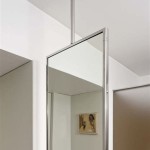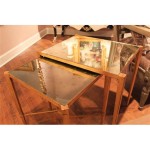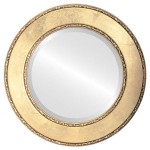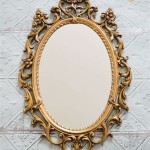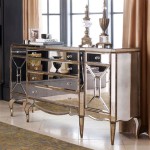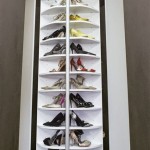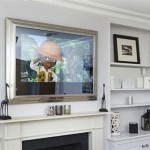Large Wall Mirror Mounting Hardware
Mounting a large wall mirror requires careful consideration of appropriate hardware to ensure both safety and stability. The weight and dimensions of the mirror dictate the type and strength of the hardware required. Choosing inadequate hardware can lead to the mirror falling, resulting in damage to the mirror, the wall, and potentially causing injury.
Understanding the different types of mounting hardware available is crucial for a successful installation. Several factors influence the selection process, including the mirror's weight, the wall material, and the desired aesthetic. Common wall materials like drywall, plaster, and concrete each require specific hardware for secure mounting.
Heavy-duty anchors are essential for large, heavy mirrors. These anchors are specifically designed to distribute weight effectively and provide a secure hold in various wall materials. Examples include toggle bolts, molly bolts, and sleeve anchors. Toggle bolts are suitable for hollow walls like drywall, expanding behind the wall surface to create a strong grip. Molly bolts also work well in hollow walls, compressing against the back of the wallboard for stability. Sleeve anchors are designed for solid walls like concrete and brick, expanding within a pre-drilled hole to create a tight fit.
D-rings and wire are a common hanging method for many mirrors. D-rings are attached to the back of the mirror frame, and wire is strung between them to create a hanging point. This method requires appropriately sized D-rings and wire capable of supporting the mirror's weight. Heavy-duty picture hanging wire is recommended for larger mirrors, offering greater strength and durability.
French cleats are another popular option for mounting large mirrors securely. A French cleat consists of two interlocking pieces of wood, one attached to the wall and the other to the back of the mirror. The angled design of the cleat creates a strong, flush mount when the two pieces interlock. This method is particularly effective for heavy mirrors and provides a stable, secure hanging solution.
J-hooks are metal hooks designed to fit over screws or nails in the wall. While suitable for lighter mirrors, they are generally not recommended for large, heavy mirrors. The weight of a large mirror can put significant stress on the hooks and the wall, increasing the risk of the mirror falling. For heavier applications, opting for more robust hardware like D-rings, wire, and heavy-duty anchors is advisable.
Mirror mounting clips offer a discreet and secure mounting option. These clips are typically attached to the wall and grip the edges of the mirror, holding it securely in place. Mirror clips are often used in conjunction with adhesive for added security. This method is suitable for mirrors that are flush against the wall and do not require a hanging wire.
Proper installation is essential for the safety and longevity of the mounted mirror. Accurately measuring and marking the desired location on the wall is crucial. Using a level ensures the mirror hangs straight. Pre-drilling pilot holes is recommended for most wall types to prevent cracking and ensure a secure hold for the hardware. Following the manufacturer's instructions for the specific hardware being used is paramount.
Weight capacity is a critical consideration when selecting mounting hardware. The hardware packaging should clearly state the maximum weight it can support. Choosing hardware with a weight capacity significantly higher than the mirror's weight provides an added safety margin. Consulting a professional installer is recommended for extremely large or heavy mirrors to ensure proper and secure installation.
The wall material plays a significant role in determining the appropriate hardware. Drywall requires different anchors than concrete or brick walls. Identifying the wall type before purchasing hardware is essential for a successful installation. Using the wrong type of anchor can result in a weak hold and increase the risk of the mirror falling.
Aesthetic considerations can also influence hardware choices. While functionality and safety are paramount, the hardware's appearance can impact the overall aesthetic. For example, decorative mounting brackets might be preferred for a more traditional look, while minimalist clips might be chosen for a modern design. Selecting hardware that complements the mirror frame and the surrounding décor enhances the visual appeal.
Regular inspection of the mounted mirror and its hardware is essential for maintaining safety. Check for any signs of loosening or damage to the hardware, the wall, or the mirror itself. Tighten any loose screws or anchors and replace any damaged components promptly. Regular inspection helps prevent potential accidents and ensures the long-term stability of the mounted mirror.
Consulting a professional installer is always an option, particularly for exceptionally large or heavy mirrors, or when dealing with complex wall materials. Professional installers possess the expertise and tools to ensure a secure and aesthetically pleasing installation. They can also provide valuable advice on hardware selection and placement based on the specific circumstances of the installation.

Mirror Clamp Support Wall Mounted Glass Bracket Heavy Duty

How To Hang A Large Wall Mirror Step By Tutorial

4 Mirror Wall Hanging Mounting Fixing Kit Frameless Plastic Clips

How To Hang A Large Wall Mirror Step By Tutorial

How To Hang A Large Wall Mirror Step By Tutorial

Mirror Hanging Brackets Strip Wall Mounts For Mirrors 1m 2m Rail

Simple Mount 30 In Heavy Duty Mirror And Picture Hanger Hm 30d The Home Depot

4 X Large Picture Hanging Brackets Brass Flat Wall Mirror Hanger Plate Fixing Nederland

Boyel Living 36 In W X 18 H Large Oval Stainless Steel Framed Wall Bathroom Vanity Mirror With Mounting Hardware Brushed Gold Bl 3618og Bc The Home Depot

Klajowp 55 In W X 30 H Large Rectangular Aluminum Alloy Framed Wall Mounted Bathroom Vanity Mirror Black Rm03 13975 120 The Home Depot

